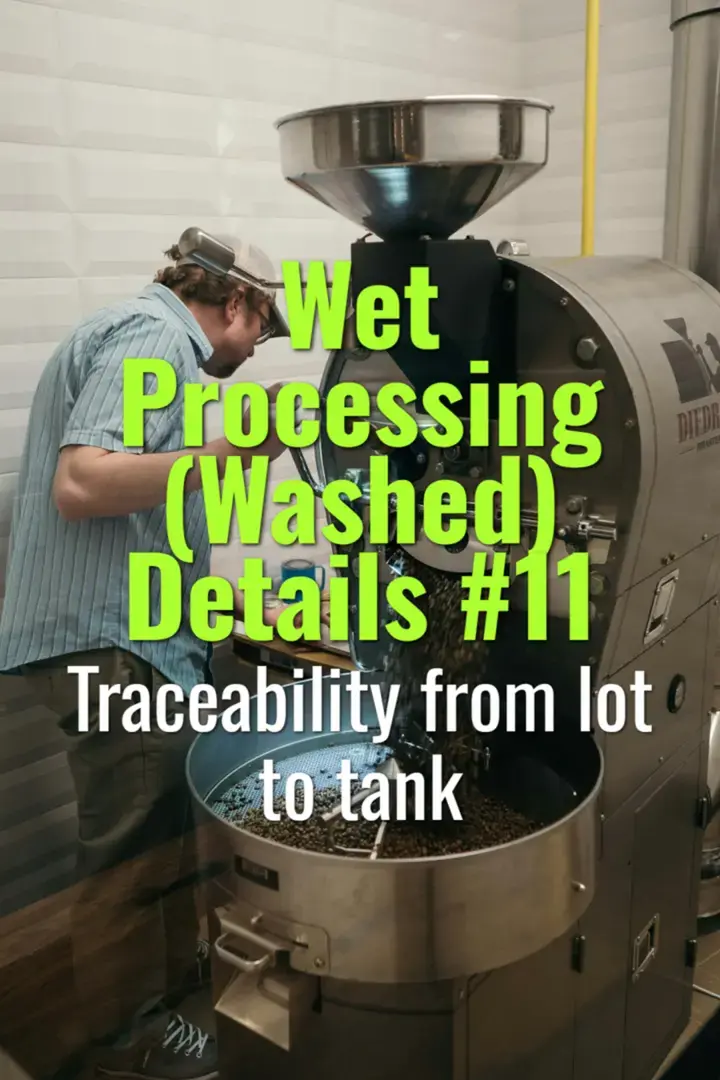Traceability from lot to tank
This topic explains how traceability is maintained during wet processing, from cherry reception through fermentation tanks, ensuring transparency, quality control, and market value.
- Coffee Basics Nerds
- 2 min read
Article 11 of 12 in Wet Processing (Washed) Details/

What is Traceability?
- Traceability is the ability to track coffee from farm lot to final export batch.
- Ensures buyers know the exact origin, processing method, and quality of each lot.
Steps in Lot-to-Tank Traceability
1. Lot Identification at Reception
- Each delivery of cherries recorded by farmer name, plot, variety, and date.
- Lots tagged with codes for separation.
2. Sorting and Weight Recording
- Defective cherries removed.
- Weight documented for production and yield tracking.
3. Tank Assignment
- Each fermentation tank marked with lot codes.
- Lots kept separate by variety, farm, or quality level.
- Avoids mixing different quality levels.
4. Process Monitoring Records
- Fermentation time, temperature, and pH logged for each lot.
- Washing, soaking, and drying tracked separately.
5. Drying and Storage Segregation
- Parchment coffee stored in clearly labeled sections.
- Bags marked with lot and tank identifiers.
6. Cupping and Quality Assessment
- Samples from each lot cupped and linked to processing records.
- Quality scores documented for traceability reports.
Benefits of Traceability
- Quality assurance: Farmers and buyers can link specific practices to outcomes.
- Transparency: Builds trust with specialty buyers seeking origin details.
- Market value: Verified traceability allows higher prices in direct trade.
- Problem-solving: If defects occur, source can be identified and corrected.
Tools for Traceability
- Paper logbooks, spreadsheets, or mobile farm apps.
- Barcoding or QR-code systems for digital traceability.
- Exporter or cooperative databases for multi-farm integration.
Challenges
- Labor-intensive, especially for smallholders.
- Risk of mislabeling during busy harvest.
- Requires training and discipline across the supply chain.
Lasting Importance
Traceability from lot to tank is a cornerstone of modern specialty coffee. By maintaining clear records and separation throughout processing, farmers and mills ensure accountability, consistency, and higher market recognition.
You might also like:
- Tags:
- Lasting Importance
- Specialty Coffee
- Direct Trade
- Specialty Buyers
- Labor Intensive
- Supply Chain
- Lot Codes
- Market Value
- Builds Trust
- Processing Method
- Quality Assurance
- Drying Storage
- Higher Prices
- Temperature Ph
- Challenges Labor
- Parchment Coffee
- Origin Processing
- Defective Cherries
- Requires Training
- Modern Specialty
- Coffee Farm
- Defects Occur